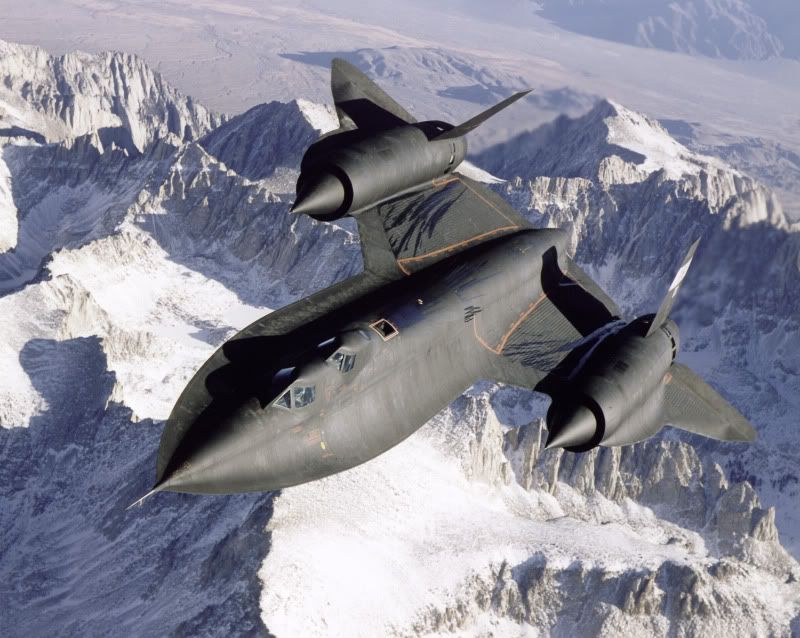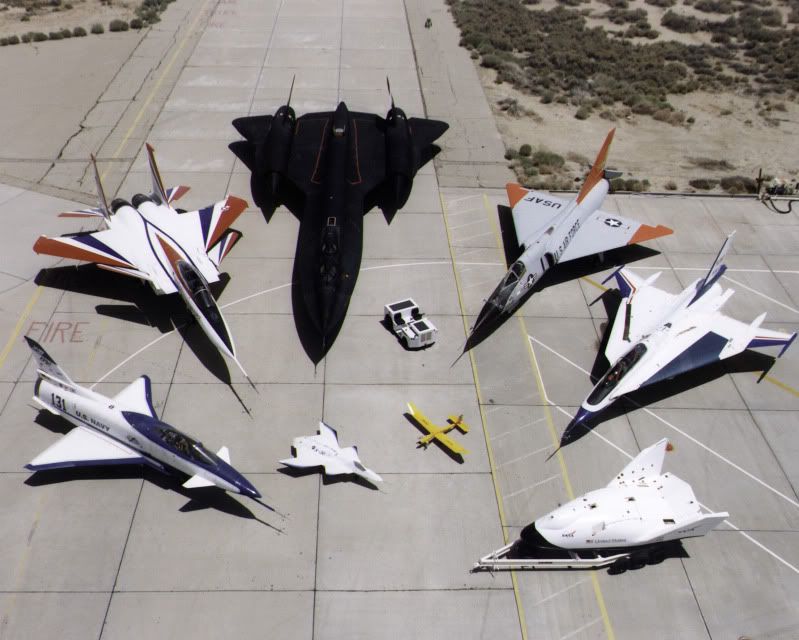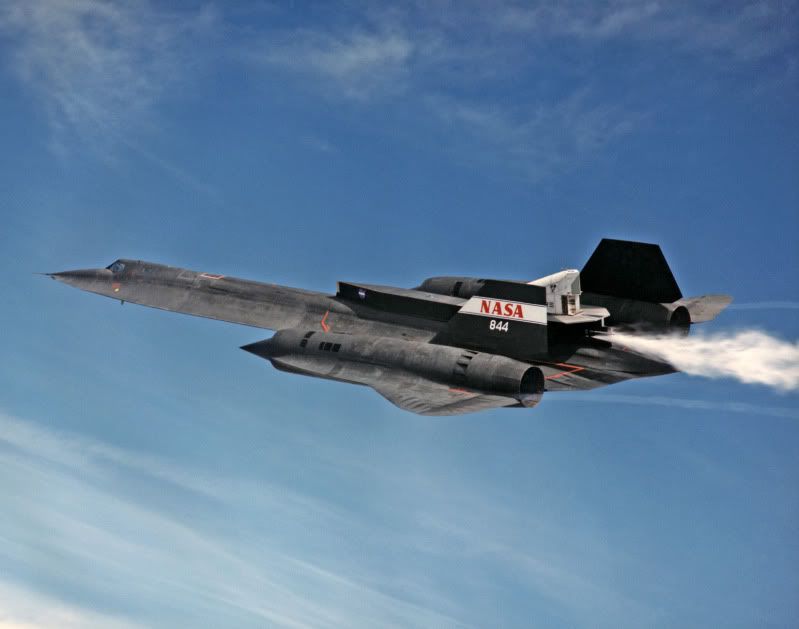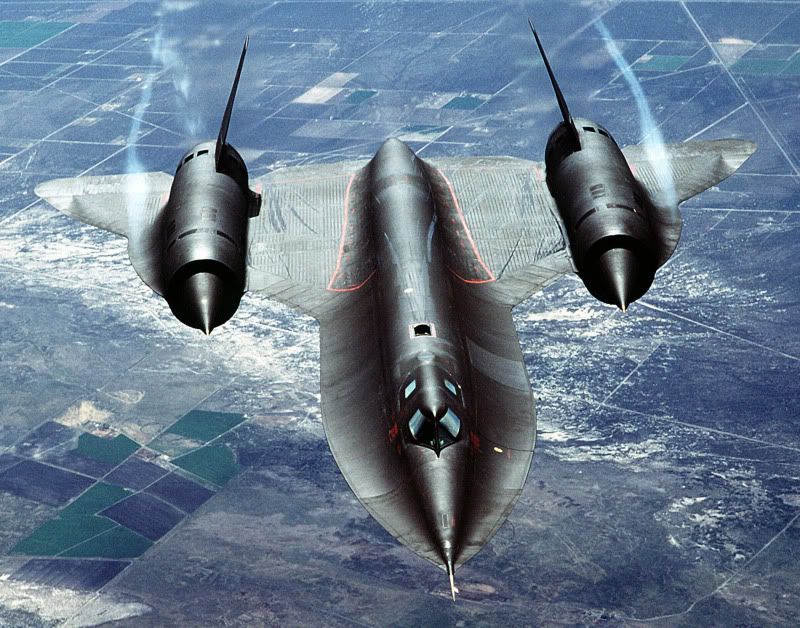sr-71 / winter / sleds / holidays... let's see some sleds!!
Thu Dec 24, 2009 12:26 am
how more fitting of a post request than to see some
"sled" pics of the a-12 / sr -71 blackbird on xmas, as "sled" was a very popular nickname for the sexy birds. we all started posting avenger pics for turkey day, some years ago..... let's start a new tradition for the winter holidays!! all the best to all on the board, & a happy & healthy new year to all. best, tom
"sled" pics of the a-12 / sr -71 blackbird on xmas, as "sled" was a very popular nickname for the sexy birds. we all started posting avenger pics for turkey day, some years ago..... let's start a new tradition for the winter holidays!! all the best to all on the board, & a happy & healthy new year to all. best, tom
Re: sr-71 / winter / sleds / holidays... let's see some sleds!!
Thu Dec 24, 2009 2:24 pm
Actually "sled" was the name used by the USAF guys for
their SR-71s. The CIA guys that operated the A-12
refferred to it as "the article" or "article 132" or which
ever bird it was.
And as to some A-12 pix...
http://rides.webshots.com/album/5696530 ... host=rides
http://rides.webshots.com/album/564419049SHEeLl
http://rides.webshots.com/album/562311819ZBiYqR
http://roadrunnersinternationale.com/mo ... lcome.html
their SR-71s. The CIA guys that operated the A-12
refferred to it as "the article" or "article 132" or which
ever bird it was.
And as to some A-12 pix...
http://rides.webshots.com/album/5696530 ... host=rides
http://rides.webshots.com/album/564419049SHEeLl
http://rides.webshots.com/album/562311819ZBiYqR
http://roadrunnersinternationale.com/mo ... lcome.html
Re: sr-71 / winter / sleds / holidays... let's see some sleds!!
Fri Dec 25, 2009 12:33 am
owen, i knew you'd be the 1st to take the bait!!  happy holidays & thanks for the links.
happy holidays & thanks for the links.
Re: sr-71 / winter / sleds / holidays... let's see some sleds!!
Fri Dec 25, 2009 9:27 am
Tom, here's as few===================================== 
 NASA PHOTO
NASA PHOTO
DESCRIPTION; Dryden's SR-71B, NASA 831, slices across the snowy southern Sierra Nevada Mountains of California after being refueled by an Air Force Flight Test Center tanker during a recent flight. The Mach 3 aircraft are being flown by the Dryden Flight Research Center, Edwards, California as testbeds for high-speed, high-altitude aeronautical research. Capable of flying more than 2200 mph and at altitudes of over 85,000 feet, they are excellent platforms for research and experiments in aerodynamics, propulsion, structures, thermal protection materials, atmospheric studies, and sonic boom characterization. Date 1 January 1995.
 NASA PHOTO (NASA Tony Landis)
NASA PHOTO (NASA Tony Landis)
DESCRIPTION; A collection of NASA's research aircraft on the ramp at the Dryden Flight Research Center in July 1997: X-31, F-15 ACTIVE, SR-71, F-106, F-16XL Ship #2, X-38, and X-36. Date 1 July 1997
 NASA PHOTO
NASA PHOTO
DESCRIPTION; The NASA SR-71A successfully completed its first cold flow flight as part of the NASA/Rocketdyne/Lockheed Martin Linear Aerospike SR-71 Experiment (LASRE) at NASA's Dryden Flight Research Center, Edwards, California on March 4, 1998.)
 NASA PHOTO
NASA PHOTO
An air-to-air overhead front view of an SR-71A strategic reconnaissance aircraft. The SR-71, unofficially known as the "Blackbird," is a long-range, advanced, strategic reconnaissance aircraft developed from the Lockheed A-12 Oxcart and YF-12A aircraft. The United States Air Force retired its fleet of SR-71s on Jan. 26, 1990, but returned them in 1995 until January 1997. Throughout its nearly 24-year career, the SR-71 remained the world's fastest and highest-flying operational aircraft.
========================================================

 NASA PHOTO
NASA PHOTO DESCRIPTION; Dryden's SR-71B, NASA 831, slices across the snowy southern Sierra Nevada Mountains of California after being refueled by an Air Force Flight Test Center tanker during a recent flight. The Mach 3 aircraft are being flown by the Dryden Flight Research Center, Edwards, California as testbeds for high-speed, high-altitude aeronautical research. Capable of flying more than 2200 mph and at altitudes of over 85,000 feet, they are excellent platforms for research and experiments in aerodynamics, propulsion, structures, thermal protection materials, atmospheric studies, and sonic boom characterization. Date 1 January 1995.
 NASA PHOTO (NASA Tony Landis)
NASA PHOTO (NASA Tony Landis)DESCRIPTION; A collection of NASA's research aircraft on the ramp at the Dryden Flight Research Center in July 1997: X-31, F-15 ACTIVE, SR-71, F-106, F-16XL Ship #2, X-38, and X-36. Date 1 July 1997
 NASA PHOTO
NASA PHOTODESCRIPTION; The NASA SR-71A successfully completed its first cold flow flight as part of the NASA/Rocketdyne/Lockheed Martin Linear Aerospike SR-71 Experiment (LASRE) at NASA's Dryden Flight Research Center, Edwards, California on March 4, 1998.)
 NASA PHOTO
NASA PHOTOAn air-to-air overhead front view of an SR-71A strategic reconnaissance aircraft. The SR-71, unofficially known as the "Blackbird," is a long-range, advanced, strategic reconnaissance aircraft developed from the Lockheed A-12 Oxcart and YF-12A aircraft. The United States Air Force retired its fleet of SR-71s on Jan. 26, 1990, but returned them in 1995 until January 1997. Throughout its nearly 24-year career, the SR-71 remained the world's fastest and highest-flying operational aircraft.
========================================================
Re: sr-71 / winter / sleds / holidays... let's see some sleds!!
Fri Dec 25, 2009 5:58 pm
Here's one I posted on the Lackland Bomber thread. Thought it might go well here too! Looking head-on at the SR-71 on display at Lackland AFB, San Antonio, Texas.


Re: sr-71 / winter / sleds / holidays... let's see some sleds!!
Fri Dec 25, 2009 6:14 pm
An A-12 at the San Diego Air & Space Museum:

Pima's SR:

The Strategic Air & Space Museum:

SR-71 at March ARB:


Pima's SR:

The Strategic Air & Space Museum:

SR-71 at March ARB:

Re: sr-71 / winter / sleds / holidays... let's see some sleds!!
Fri Dec 25, 2009 6:47 pm
Just looks like it's going like 1000 mph, even on the ground!! I like the way the one at the Strategic Air and Space Museum is mounted. Lovely shot. For those who haven't read it, Ben Rich's Skunkworks has some fabulous stories on these aircraft.
Re: sr-71 / winter / sleds / holidays... let's see some sleds!!
Sat Dec 26, 2009 5:17 am
Cool stuff!  It is really a shame they're not still flying these.
It is really a shame they're not still flying these.  Or are they?
Or are they? 
Re: sr-71 / winter / sleds / holidays... let's see some sleds!!
Sun Dec 27, 2009 3:52 am
The last flight of an SR-71 was on October 9th 1999 at Edwards. That was #61-7980/NASA 844 used by NASA for high speed research. I was there and captured this historic flight on video. Have a look here:
http://www.clipwings.com/index.php?comm ... deo_id=842
The video shows also the following Blackbirds on display:
SR-71A #17955 and SR-71B #17956/NASA 831 at Edwards AFB, A-12 #06924, SR-71A #17973 as well as an D-21 Drone at Palmdale.
http://www.clipwings.com/index.php?comm ... deo_id=842
The video shows also the following Blackbirds on display:
SR-71A #17955 and SR-71B #17956/NASA 831 at Edwards AFB, A-12 #06924, SR-71A #17973 as well as an D-21 Drone at Palmdale.
Re: sr-71 / winter / sleds / holidays... let's see some sleds!!
Sun Dec 27, 2009 5:58 pm
I'd love to see one fly again! However, I was told all the A-12s
were demilled before they went to museums. Don't know about
the SR-71, but suspect the same. Even if one were returned to
flying status, that would be only the beginning. The fuel would
have to be put back into production as would the Tri-Ethyl-Bortrate.
A separate tanker source would have to be dedicated to the 'birds.
And the list goes on.... Also, within the last two years all the spare
parts for the Blackbirds that were stored in USAF warehouses in
Palmdale were destroyed because they needed the space for something
else.
Considering what a good job the CIA did keeping knowledge of the
A-12 from the public I would speculate that there is something
operational out there that far exceeds the Blackbird's capability.
were demilled before they went to museums. Don't know about
the SR-71, but suspect the same. Even if one were returned to
flying status, that would be only the beginning. The fuel would
have to be put back into production as would the Tri-Ethyl-Bortrate.
A separate tanker source would have to be dedicated to the 'birds.
And the list goes on.... Also, within the last two years all the spare
parts for the Blackbirds that were stored in USAF warehouses in
Palmdale were destroyed because they needed the space for something
else.
Considering what a good job the CIA did keeping knowledge of the
A-12 from the public I would speculate that there is something
operational out there that far exceeds the Blackbird's capability.